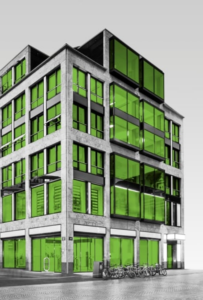As the global emphasis on sustainability and energy efficiency intensifies, building owners are increasingly focusing on ensuring their properties operate at peak efficiency. One of the most effective methods to achieve this is through retro-commissioning studies. This process evaluates and improves the performance of an existing building’s systems, confirming that they function according to the original design intent or identifying opportunities for improvement. Here’s why retro-commissioning is critical for building owners.

Identifying Performance Gaps
Over time, buildings often deviate from their initial design performance due to changes in usage patterns, system degradation, or operational errors. Retro-commissioning helps identify these performance gaps. By conducting a thorough review of the building’s HVAC, lighting, and other mechanical systems, building owners can pinpoint inefficiencies that lead to excessive energy consumption and higher operational costs.
Enhancing Occupant Comfort
A well-functioning building not only operates efficiently but also provides a comfortable environment for its occupants. Retro-commissioning ensures that heating, cooling, ventilation, and lighting systems work optimally, maintaining consistent indoor air quality and temperature. This can lead to increased tenant satisfaction and productivity, which is particularly important in commercial energy intensive properties.
Reducing Energy Costs
Energy costs constitute a significant portion of a building’s operating expenses. Inefficient systems and operations can lead to unnecessary energy waste. Retro-commissioning identifies and rectifies these inefficiencies, leading to substantial energy savings. Building owners can often recover the cost of the retro-commissioning process through these savings, making it a financially prudent investment.
Extending Equipment Lifespan
Building systems and equipment are significant investments. Retro-commissioning ensures these assets are properly maintained and operate within their designed parameters, reducing wear and tear. This proactive approach can extend the lifespan of equipment, delay capital expenditures for replacements, and reduce maintenance costs.
Meeting Regulatory and Certification Standards
With the growing emphasis on sustainability, many jurisdictions have implemented regulations requiring buildings to meet certain energy performance standards. Additionally, achieving certifications such as LEED (Leadership in Energy and Environmental Design) can enhance a building’s marketability and value. Retro-commissioning helps building owners comply with these standards and certifications by ensuring their buildings perform at the highest possible efficiency levels.
Environmental Responsibility
Reducing a building’s energy consumption not only lowers costs but also decreases its environmental footprint. Retro-commissioning can significantly reduce greenhouse gas emissions by optimizing energy use, contributing to broader efforts to combat climate change. Building owners who prioritize sustainability can enhance their reputation and meet corporate social responsibility goals.
The Role of NovaVue in Retro-Commissioning
While the benefits of retro-commissioning are clear, the process requires accurate, real-time data to be effective. This is where NovaVue from Nova Power Cloud Solutions comes into play. NovaVue is a sophisticated SaaS-based application designed for comprehensive energy management and monitoring.
Continuous Energy Monitoring with NovaVue
NovaVue provides building owners with continuous, real-time monitoring of their building’s energy usage. This ongoing oversight is crucial for several reasons:
- Real-Time Data Access: NovaVue ensures that both building owners and design engineers have access to up-to-date data at all times. This real-time data is critical for making informed decisions and quickly addressing any deviations from optimal performance.
- Identifying Trends and Anomalies: Continuous monitoring allows for the identification of usage patterns and anomalies that may indicate inefficiencies or potential system failures. Early detection through NovaVue’s advanced analytics can prevent minor issues from escalating into major problems.
- Verification of Retro-Commissioning Results: Post retro-commissioning, NovaVue can verify that the implemented improvements are achieving the desired outcomes. This verification process is essential to ensure that the retro-commissioning efforts translate into tangible energy savings and performance enhancements.
- Data-Driven Maintenance: With NovaVue, maintenance can be more strategic and data-driven. Instead of relying on scheduled maintenance, building owners can adopt a predictive maintenance approach, addressing issues based on actual performance data, which can lead to further cost savings and extended equipment life.
The Advantage of a SaaS-Based Solution
As a cloud-based platform, NovaVue offers several advantages:
- Scalability: NovaVue can easily scale to monitor multiple buildings and systems, providing a comprehensive view of energy performance across an entire portfolio.
- Accessibility: Users can access NovaVue from anywhere, enabling remote monitoring and management of building systems.
- Integration: NovaVue integrates seamlessly with existing building management systems, facilitating a smoother retro-commissioning process.
Conclusion
Retro-commissioning is a vital process for ensuring that buildings operate at their designed efficiency, providing benefits such as reduced energy costs, enhanced occupant comfort, extended equipment lifespan, and compliance with regulatory standards. NovaVue from Nova Power Cloud Solutions enhances this process by offering continuous, real-time energy monitoring, ensuring that building owners and design engineers have the data they need to maintain optimal building performance. By leveraging NovaVue, building owners can achieve and sustain high levels of efficiency, contributing to both their financial bottom line and environmental sustainability goals.
